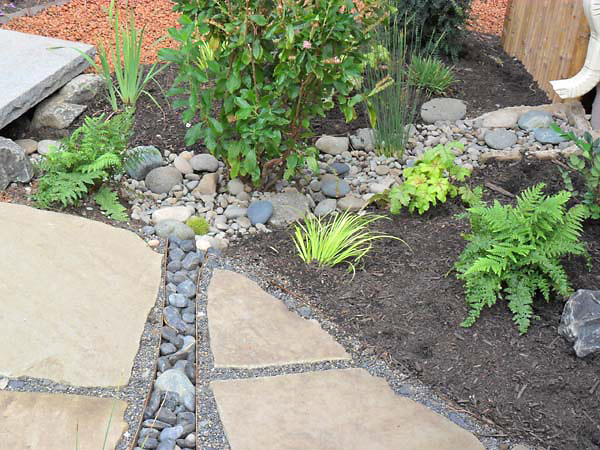Storm water can have a big effect on neighboring bodies of water, even if they are quite removed from your home. A rain garden is designed to absorb and fix large amounts of rainwater, then release it slowly into the soil around it. Rain gardens are a beautiful way to counteract the effects of runoff from driveways and roofs. A  well-designed rain garden can absorb rain water as much as 30-40% more efficiently than a standard lawn.
well-designed rain garden can absorb rain water as much as 30-40% more efficiently than a standard lawn.
Rain gardens are typically located on the route that rainwater takes during heavy storms. The rain garden may be placed simply at the end of downspouts or anywhere rainwater collects. Other good sites for rain gardens include natural low spots in a yard in areas where rain collects. They can also be very effective in protecting streams, lakes and ponds when placed between the home or driveway and the water feature.

Rain gardens are dug as shallow as 4-8 inches or as deep as 2-3 feet, depending on the volume of water passing through. A rain garden offers the same filtering capabilities as forest or meadows in a more compact space.
You’ll want to identify plants that thrive on lots of water, with deep root systems. To determine the best choice for your area, check with your local garden center or university extension for the best options in your zone. It’s also preferable to use native species as they are better suited to local conditions and more tolerant of pests and extremes in temperature.
A really great online resource for planning your own rain garden is The Rain Garden Network with plenty of tips and how-tos to create your own rain garden.
